Should You Get a HydraFacial or a Chemical Peel?
It all depends on what you’re trying to address.
There are actually three types of chemical peels – superficial, medium, and deep – and they are used to reduce common imperfections in the skin.
Meanwhile, the HydraFacial is a patented multi-step medical-grade resurfacing treatment.
Interestingly enough, one of those steps is actually an extremely mild peel. So in a way, the two procedures are related.
But when it comes down to deciding whether a HydraFacial or a chemical peel will be right for you, it helps to understand the differences between the two.
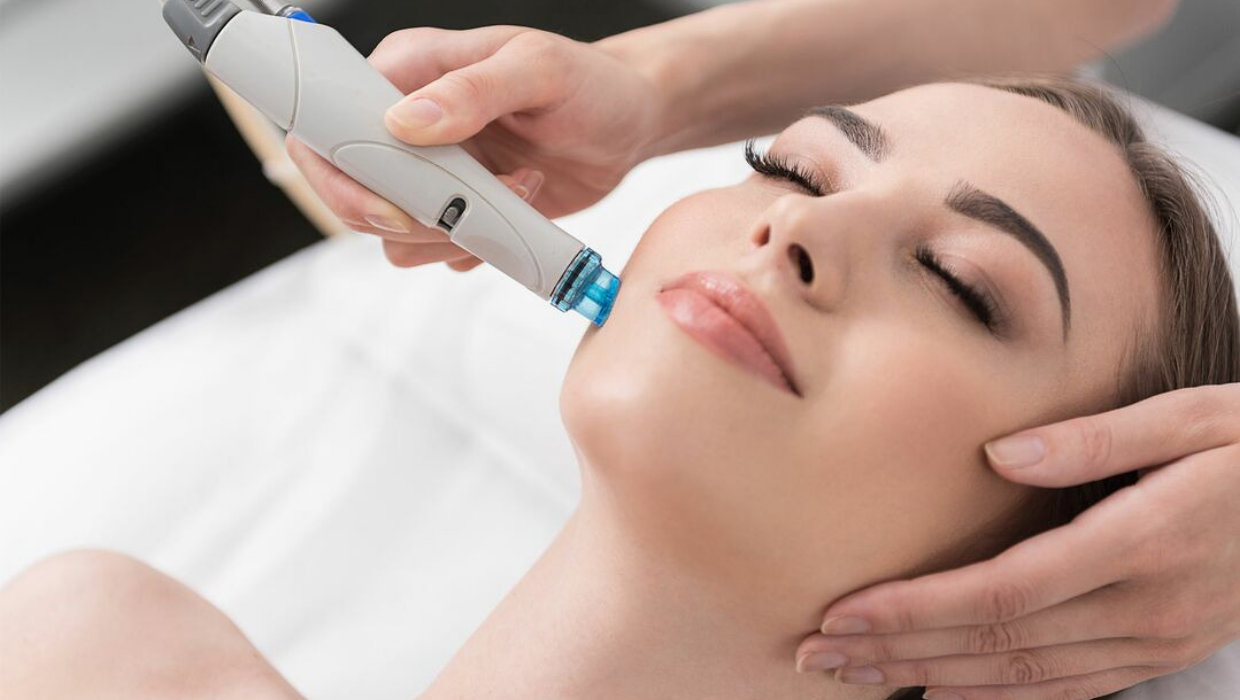
The Hydrafacial Procedure
The HydraFacial is an extremely effective way to clean and clear out your pores. But it also hydrates the skin.
The first order of business with the HydraFacial treatment is to cleanse the skin by removing the dead skin cells and excess sebum from the skin.
Next comes a very mild peel. A mix of salicylic and glycolic acids are applied to the skin to break up any oil or dirt that’s clogging your pores without causing the skin to peel.
Finally, a pen-like device called the HydraPeel Tip basically vacuums out blackheads, dirt, oil, and impurities. Meanwhile, hydrating serums are simultaneously applied to plump and nourish the skin.
How It Differs from Microdermabrasion
Perhaps you’ve heard of microdermabrasion.
It’s a very effective procedure that uses micro-crystals to exfoliate the skin. But the crystals can be irritating for those who are prone to acne or have sensitive skin.
By contrast, HydraFacial uses water as the exfoliating medium. So it’s essentially like a facial and microdermabrasion all in one.
Plus, you can discuss with your skincare professional ways to incorporate add-ons or boosters to customize your HydraFacial.
Recovery from HydraFacial
HydraFacial has minimal side effects.
Beyond a little redness immediately following the treatment, there is almost no downtime.
You just need to allow your skin to rest for a day so that you can absorb all of the benefits of the facial. Then the next day, you can pop out of bed, put on your makeup, and return to your everyday activities.
So Should You Get a HydraFacial or a Chemical Peel?
The HydraFacial is wonderful for cleaning, resurfacing, and hydrating your skin.
But if you’re looking to reduce the appearance of fine lines and wrinkles around the mouth and under the eyes, or you want to remove spotting from sun damage, aging, or genetics, the chemical peel is a better option.
It can even treat certain types of acne.
With a chemical peel, a solution is applied to your entire face that causes the surface layer of the skin to blister and peel off. This prompts your body to generate more collagen which results in a new layer of healthier skin that’s clear of blemishes.
A superficial peel only penetrates the outermost layer of skin.
A medium peel uses stronger chemicals to reach the outer and middle layers of skin to remove damaged skin cells.
And finally, a deep peel fully penetrates the middle layer to ensure the removal of deeply damaged skin cells.
Recovery after a Chemical Peel
The recovery time for a chemical peel will depend on which type you have.
Superficial peels require one to seven days to heal. Lotion or cream can be applied during healing and makeup can usually be worn the next day.
Medium peels require a longer recovery time. They typically take 1-2 weeks to heal – with swelling worsening for the first 48 hours. Ointment needs to be applied and sun exposure is prohibited until healing is complete.
Finally, a deep peel requires 2-3 weeks to heal and the treated area will be bandaged. Skin will require soaking, ointment, and thick moisturizers as healing continues. Sun exposure should be avoided for 3-6 months.
Bring New Life Back into Your Face!
To determine whether you’re better suited for a HydraFacial or chemical peel, contact us today for a free consultation.
Once you discuss all your options with one of our skincare professionals, you’ll be ready to take the next step toward glowing and younger-looking skin.
Don’t hesitate!
BBL
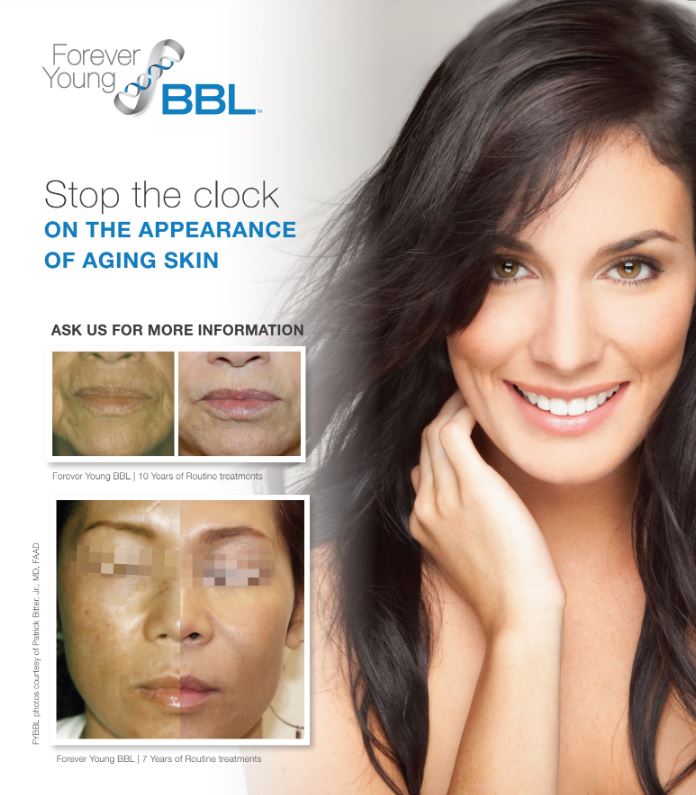
The Huge Benefits of Halo Laser Treatment
Are you an avowed sun-worshipper?
The sun is great. It provides Vitamin D, increases the production of serotonin, and is vital for all life on the planet.
It’s not so great for the skin though.
In fact, life in general can be rough on the skin. Right along with the sun, environmental factors, acne, and aging can take their toll on your skin.
Fortunately, laser resurfacing can bring new fullness and glow to your skin. And the latest technology – Halo Laser Treatment – is second-to-none.
There are so many benefits of Halo Laser Treatment, you’ll want to make it a regular part of your skincare regimen.
What Makes HALO So Special?
Well, it’s a pretty big deal because it’s the first fractionated laser that uses ablative and non-ablative technology simultaneously.
Sounds impressive, but you’re probably wondering what all that means.
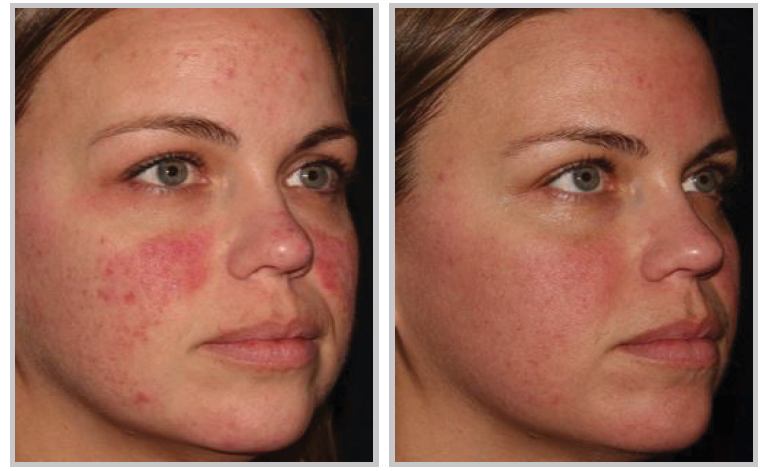
Without getting too technical, an ablative laser targets very small pathways in the skin while leaving the area around it untouched. It’s similar to when your aerate your lawn.
While all of that is happening, the non-ablative laser drills little thermal holes into the skin. The skin recognizes these as injuries, which in turn triggers collagen and elastin production.
Collagen and elastin are key in minimizing the formation of wrinkles.
So Halo not only smooths out wrinkles, but it’s key in the prevention of future wrinkles.
The Benefits of Halo Laser Treatment
Patients treated with Halo can expect remarkable results in just 1-2 treatments, versus the 5-6 treatments that were often required by older non-hybrid technology.
Plus, the shorter recovery time with Halo is not punctuated by the severely swollen and sometimes scary “raw-meat” face that often resulted with the older technology. (The lengths we once had to go to for beauty!)
By targeting both the epidermis and dermis, the hybrid laser is capable of the following:
- minimizing the appearance of pore size
- helping correct sun damage/dyschromia
- lessening presence of pigmented lesions
- treating scars (including those from acne and actinic keratosis)
- cutting down on brown spots
- smoothing wrinkles and fine lines
- evening out skin texture and tone
Halo can be performed on most skin tones and can resurface about 25 – 30% of the skin. And the treatment itself is pretty comfortable.
What Goes into a Halo Treatment
Receiving a Halo treatment is rather like getting a very controlled sunburn. As such, it should be noted that you cannot go suntanning for 4-6 weeks before this treatment.
Your board-certified plastic surgeon will consult with you before the procedure to determine the problems you want to address and what areas you’d like to target.
Although Halo is most commonly used on the face, other areas of treatment include the neck, chest, arms, legs, and hands.
Before the actual treatment is performed, a topical anesthetic will be applied to the area to be worked. This must sit on your skin for 45 minutes to an hour to ensure that it is completely numbed.
Some patients choose to add an oral anti-inflammatory as well such as Motrin, Advil or Tylenol.
Once the skin is numbed, the board-certified plastic surgeon uses the halo to first measure surface area of the skin to be treated so the amount of energy needed for delivering the treatment can be calibrated.
This is done to ensure that he or she knows exactly how far down to go to address your issues.
Then the procedure itself is fairly simple.
You’ll just lay back and close your eyes while the surgeon performs the laser resurfacing. Once it’s over, you’re free to go home.
Recovering from Halo
Generally speaking, the side effects from Halo are minimal. There may be some redness, swelling, and/or tenderness that can relieved with a cold compress post-treatment. It usually takes 1-3 days for these to subside, and 3-5 days for full recovery.
The majority of patients are able to return to work or other everyday activities the next day after a mild treatment. And makeup can be applied after just 24 hours.
Most patients notice a smoother and more youthful-looking complexion in 2-5 days. And these improvements will gradually continue as collagen and elastin production are boosted.
Is Halo Laser Treatment Right for You?
While having two milder Halo treatments in the first year is more than enough to brighten skin and maximize preventative aging, you may prefer to opt for one deeper rejuvenation as well.
One of our award-winning surgeons can perform a full facial analysis to give you an in-depth consultation about your options, then create a customized plan to meet your goals. So contact us today!
And then get ready to experience the many benefits of Halo laser treatment for yourself.
Is It Time to Get a Facelift or Neck Lift?
How comfortable are you in your skin?
If you look in the mirror and see jowls, facial folds, deep wrinkles, and other signs of aging, it could be impacting your self esteem.
Not everyone buys into the euphemism of “aging gracefully.” Especially if you’re dissatisfied with how your face is aging.
If you’re unhappy with your appearance, it could be time to get a facelift or neck lift from a board-certified plastic surgeon.
But what do these procedures entail exactly? Let’s take a look.
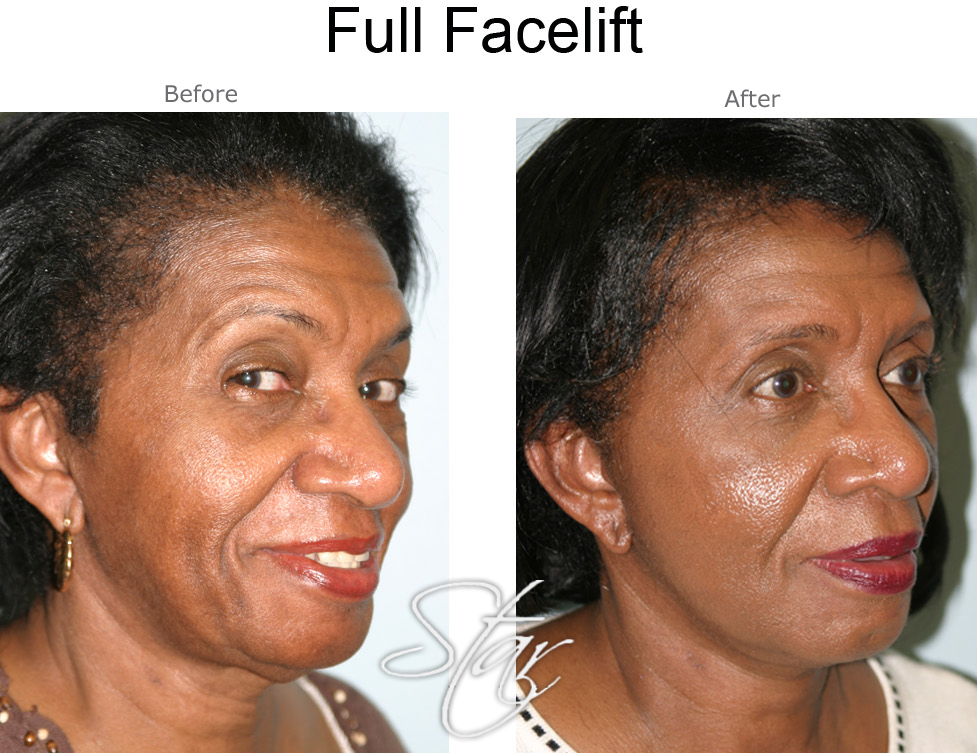
Full Facelift
Your facial skin loses elasticity as you age. Without the ability to bounce back, the cheeks begin to sag along the jaw bone, creating fleshy jowls and often a double chin.
As time goes on, the cheek fat may then sag further forward and increase the appearance of the nasolabial folds in that parenthesis area between the nose and corners of the mouth.
But a facelift can reverse these signs of aging.
A facelift is known medically as a rhytidectomy. It comes from the Ancient Greek rhytis, meaning “wrinkle”, and ektome, meaning “excision.” Essentially, it’s the surgical removal of wrinkles.
Today, one of the most effective procedures is the SMAS facelift. A SMAS facelift is more involved than a skin only facelift, which does not last.
The SMAS, or superficial muscular aponeurotic system, is one of the most important structures for the face. The SMAS is a continuous sheet of muscles that are tightened to give true strength and longevity to a facelift.
By manipulating the SMAS, a plastic surgeon is able to change the appearance of the face.
With an SMAS facelift, the emphasis of the lift is placed on the SMAS. The plastic surgeon plicates, or folds, the SMAS to tighten it. He or she then redrapes and trims the skin with minimal tension to provide a smoother, tighter, and more youthful appearance.
In addition, a fat transfer may be performed to bring more volume to the face.
Your recovery time from this procedure will depend on a number of factors. Typically, patients can do light cardio after two weeks, enjoy dinner out with friends after two to three weeks, and be wedding ready in just four to six weeks.
When to Get a Neck Lift
Some people experience excess skin and fat on their neck as they age. This “turkey” neck is also a result of the thinning of a neck muscle known as the platysma.
The Platysma muscle stretches from the collarbone to just over the jawline. A youthful platysma creates a deep neck angle and tight hammock for the neck. As the platysma muscle gets thinner and more lax, it creates an oblique neck angle instead of a deep youthful angle.
A neck lift, or platysmaplasty, is more effective when the surgeon performs a platysma muscle plication.
Similar to the SMAS facelift procedure, the surgeon plicates the platysma muscle to tighten it, then redrapes the skin with minimal tension. This returns the muscle to a tight hammock for the neck.
Because the platysma muscle does impact muscles in the face, a neck lift can bring balance to the facial shape. This can make it a good choice for those who aren’t quite ready for a full facial lift, but want to restore this balance.
As with the facelift procedure, your surgeon will discuss with you your recovery timeline. This will be based on the invasiveness of the procedure you choose.
Adding Other Procedures
It’s not unusual for a neck lift to be combined with liposuction of the anterior neck.
And both the neck lift and facelift can be combined with a brow lift and/or eyelid lift, laser resurfacing, and volume replacement with fat or fillers.
The laser resurfacing addresses the finer wrinkles in the perioral area, and injectable fillers or fat can be used to replace loss of volume of facial lipoatrophy.
Now Is the Time to Get a Facelift or Neck Lift
There’s no need to lack confidence in your appearance any longer.
Contact us today to find out if you’re a candidate to get a facelift or neck lift. One of our board-certified surgeons will discuss all of your options with you to ensure you get the best results.
Then prepare to restore your youthful appearance – and your confidence too.
How Effective are BOTOX® and JUVÉDERM®?
Are you growing weary of the lines and wrinkles on your face? Does it seem like new ones show up every day?
Some people will tell you that those smile lines just prove that you smile a lot. Or that your crow’s feet lend a more distinctive look.
But you know the truth. And it makes no difference anyhow if you’re not satisfied with how your face is aging.
If you’re not yet ready to commit to going under the knife for a facelift, you do have non-surgical options with BOTOX® or JUVÉDERM®.
And they’re incredibly effective.
We’ll take a look at the many options available through these procedures.
The Magic of BOTOX®
First, we need to clarify something about wrinkles.
To you, a wrinkle is probably a wrinkle. They’re all the same and you don’t want any of them.
But there are actually two kinds of wrinkles. Static and dynamic.
Static wrinkles are the lines and folds that are always there on your face. Dynamic wrinkles, on the other hand, occur when you use your muscles to form facial expressions.
Prime examples of dynamic wrinkles are the lines in the forehead and around the brow, as well as crow’s feet around the eyes.
BOTOX® is used specifically to smooth out dynamic wrinkles only. But how does it work?
BOTOX® is a prescription medication that, once injected, blocks signals from your nerves to your muscles. This keeps the targeted muscles from contracting; the very action that produces fine lines and wrinkles.
When the muscles relax, you’re left with a a smooth and wrinkle-free appearance.
Because of the presence of Botulinum toxin in this medication, the question plastic surgeons are most often asked is, “how safe is BOTOX®?”
The quick answer is “completely.”
BOTOX® has been used for almost thirty years now. During that time, there has never been a recorded instance of botulism or paralysis from BOTOX®. And the FDA considers BOTOX® to be a safe, effective way to reduce wrinkles and smooth out fine lines.
It is also a very simple procedure.
After the BOTOX® injections, there is little to no downtime. Although patients should avoid strenuous activity for the rest of the day, they are able to return to their everyday life as soon as they feel comfortable.
Why Use JUVÉDERM®?
And after years of living, laughing, eating, yawning, talking, etc., lines and wrinkles become etched into the areas around the nose and mouth. These are static wrinkles.
Smile lines develop and the skin around the nose and mouth (known medically as nasolabial folds) begin to sag.These static wrinkles and folds can easily add years to your appearance.
JUVÉDERM® works to fill the lines and firm up the folds in this parenthesis area around your nose and mouth.
Treatment with JUVÉDERM® is quick – lasting only about 15 minutes. Using a very fine needle, your plastic surgeon injects JUVÉDERM® into the area being treated. And since it includes the anesthetic lidocaine, there is little to no discomfort during injections.
Patients see results immediately, though there might be some swelling. Once that subsides, results continue to improve.
There is minimal to no downtime associated with JUVÉDERM®. In fact, most patients are able to return to work right after treatment. To ensure optimal results, however, patients are advised to protect their skin from the sun for 10 days.
It’s a small price to pay for a more youthful appearance.
What Is JUVÉDERM VOLUMA® XC?
With some areas of the face, the issue isn’t always wrinkles.
The actual structure and volume of your face becomes less as you age. That’s why JUVÉDERM VOLUMA® XC was developed.
This filler uses hyaluronic acid (HA) to replenish missing volume – particularly in the upper cheek area, also known as the hollow, the apple, or the apex.
Hyaluronic acid is a naturally occurring substance that’s produced by your body. Large amounts of it are found in your skin where its function is to retain water to keep your skin well lubricated and moist.
As you age, your body makes less of this substance. This particular injection serves to replenish the HA and restore a firmer appearance around the mid-face, or any other area that needs volume restored.
During the procedure, JUVÉDERM VOLUMA® XC is injected into the predetermined treatment areas. This may result in mild redness and swelling near the injection sites that will disappear within a few days.
Results will continue to improve over the course of the next several weeks.
The Purpose of JUVÉDERM VOLBELLA®
As the years pass, it’s not unusual to lose volume in your lips as well. But the skin in this area, as well as around the eyelids, is much more delicate than other areas of the face. Static lines that show up in these areas require a gentler approach.
In these instances, your plastic surgeon or skin care specialist might recommend JUVÉDERM VOLBELLA®.
Also made up of HA, the particles in JUVÉDERM VOLBELLA® are smaller than those in JUVÉDERM® VOLUMA® XC so that they can effectively treat finer lines and more delicate areas where the skin is thinner.
As with the other two JUVÉDERM® treatments, injection is done with a thin needle and patients can expect to experience minimal to no discomfort during the procedure.
There may be mild redness, tenderness, or swelling after the procedure which will subside within a couple of weeks. It is also recommended that patients avoid strenuous activity or direct sun exposure to the treatment area for the first 24 hours following treatment.
Patients notice results immediately after the injection. And these only continue to improve over time as any residual swelling subsides.
BOTOX® and JUVÉDERM® Give You a Reason to Smile
Surgical procedures are fantastic for rejuvenating your face.
But non-surgical procedures like BOTOX® and JUVÉDERM® can be just as effective. And without the recovery time.
It all depends on your unique situation.
So contact us today to talk with a board-certified plastic surgeon about which option would be best for you.
It’s almost as good as turning back the hands of time.
The Facts about Breast Augmentation Surgery
The Facts about Breast Augmentation Surgery
Has pregnancy, injury, illness or even just aging left you feeling dissatisfied with the appearance of your breasts?
If so, you may be the perfect candidate for breast augmentation surgery.
Breast augmentation, also known as augmentation mammoplasty, is a surgery that places implants to increase fullness and projection of the breasts.
It can be done for reconstructive purposes, such as after an injury or mastectomy for breast cancer, or for cosmetic reasons to enhance self-image and self-confidence.
So what are the facts about breast augmentation surgery? They’re pretty straightforward and simple, really.
We’ll start by taking a look at the implants.

Silicone Implants Vs. Saline Implants
It’s not really a competition.
In fact, there is little to even no discernible difference between the appearance of breasts augmented with silicone implants over those with saline implants.
Both silicone and saline implants involve a silicone shell that is either smooth or textured.
In the case of silicone implants, the shell comes from the manufacturer filled with a pre-determined amount of silicone gel. The implant is then surgically placed.
Many patients claim that silicone implants feel the most like natural breast tissue.
By contrast, with a saline implant, the silicone shell is inserted into the body first and then filled with saline to its desired volume by the surgeon.
Even so, both cases require the same size incision.
However, saline has the consistency of water so there is a slightly greater chance of visible rippling or wrinkling with saline implants. This is far less likely to be apparent when the implants are placed under the pectoral muscle or in the dual plane position (under the gland and lower border of the pectoralis major muscle.)
When choosing between silicone and saline implants, each has its own distinct advantages depending on your situation. It’s important you get a thorough examination and then sit down with your surgeon to discuss which option is better for you based on your unique needs.
It should also be noted that because breasts continue to develop in women until they are in their late teens or early 20s, the FDA requires that women be at least 18 years old to get saline implant breast augmentation and at least 22 years of age to receive silicone implants.
Incision Options
If you’re hoping to don a bathing suit or sports bra again, then be sure to find a board-certified surgeon who offers sub-muscular breast implant placement.
This procedure offers the most natural look while greatly minimizing the appearance of obvious implants. Plus, breast implants placed underneath the muscle do not interfere with mammograms.
There are two common types of incisions for breast augmentation: periareolar and inframammary.
Periareolar
This incision is made along the inferior border of the areola. The surgeon then inserts the implant in the breast pocket. This method offers excellent scar quality which is difficult to see after it heals at the junction between the pigmented areola and breast.
There is virtually no risk of losing nipple sensation because the nerve to the nipple does not come through the skin. Instead, it travels along the ribcage and through the gland to the nipple. This is important for women who plan to breastfeed in the future.
Inframammary
With this incision, the cut is made along the inframammary fold – which is the crease of skin underneath the breast. There is very little risk of losing nipple sensation with an inframammary incision.
In the case of both incision types, the surgeon can typically reuse the incision in the event of any needed re-operations. And because of its location, the scar is relatively or even completely unnoticeable.
Recovering from Breast Augmentation Surgery
Should you opt for this surgery, it’s reasonable to expect 5-7 days for recovery.
This doesn’t mean you’ll be laid out flat during this time. In fact, patients are encouraged to ambulate the same day or day after the surgery. But rest is important and there should be no heavy lifting or pushing whatsoever.
You will need a follow-up appointment during that time as well so your surgeon can monitor the incision sites to ensure they’re healing correctly.
Implants can last for many years and do not need to be changed unless in the rare event that there is a problem.
Now You Know the Facts about Breast Augmentation
Knowing the facts about breast augmentation will help you when it comes time to find the right surgeon.
Choosing a board-certified surgeon with many years of experience will strongly lessen the likelihood that you’ll have complications down the road.
So if you’re considering breast augmentation, contact us today to work with highly experienced surgeons who are thorough and will listen closely to your desires.
Once you provide us with the necessary information, we will perform a full assessment of your body to help you determine what size and shape implant will best meet all of your needs.
The Importance of Credentials for Your Plastic Surgeon
Is your plastic surgeon board certified?
If you haven’t asked that question, it’s crucial that you do.
You may have never stopped to consider whether your general practice physician is board certified. But it’s not really an issue because he or she accepts insurance and is therefore required, by the insurance company, to be credentialed.
But when you seek out a cosmetic procedure like a full facelift, it is typically not covered by insurance. Therefore, the doctor’s credentials aren’t under scrutiny and they are not required to abide by the same rules and standards.
That’s why it’s essential you insist on checking the credentials for your plastic surgeon.
Otherwise, you’re putting your life at risk.
Necessary Credentials for Your Plastic Surgeon
When going outside a traditional health system or hospital, verifying that your doctor is board-certified is an absolutely necessary step.
So if you’re planning to undergo cosmetic plastic surgery, the first step is to find a doctor that is board certified by American Board of Plastic Surgery (ABPS).
- The American Board of Plastic Surgery (ABPS)
The ABPS is one of 24 medical specialty boards that make up the larger and more comprehensive American Board of Medical Specialties (ABMS).
Recognizing the need to protect the public, these boards work together to ensure that doctors meet specific educational, training, and professional requirements.
In other words, they establish the standards that physicians are required to achieve in order to maintain their board certification.
ABMS and the respective specialty boards are accountable both to the public and the medical profession.
They support physicians by creating programs that assist doctors in their field and improve their practice. And they help patients identify which doctors are certified and what that entails.
Furthermore, they work with healthcare leaders to foster initiatives that monitor and promote the quality of healthcare, while increasing awareness around the importance of board certification.
- American Society of Plastic Surgeons (ASPS)
In addition to being board certified by ABPS, look for plastic surgeons who are members of the American Society of Plastic Surgeons (ASPS).
As the largest plastic surgery specialty organization in the world, the ASPS is a leading authority on cosmetic plastic surgery and represents 93% of all board-certified plastic surgeons in the U.S.
In a nutshell, the mission of ASPS is to “promote safe, ethical, efficacious plastic surgery to the public by maintaining high standards for the education, examination, certification and continuous certification of plastic surgeons as specialists and subspecialists.”
ASPS and its members make patient safety a top priority. One way they do this is by providing education, advocacy, practice support, and enhanced public awareness of the value of plastic surgery.
Because they demand the highest professional, ethical, and quality standards, ASPS requires that surgery is only performed in accredited, state-licensed or Medicare-certified surgical facilities. That means that the surgeons, other personnel, operating rooms, and equipment must meet stringent national standards.
- American College of Surgeons (ACS)
Finally, if you’re able to locate a surgeon with the letters FACS after his or her name, then you’ve found the cream of the crop. This means that he or she is a member, a.k.a. “Fellow”, of the American College of Surgeons.
To become a Fellow, surgeons must pass a rigorous evaluation that measures his or her education and training, surgical competence, ethical conduct, and professional qualifications.
Only surgeons that meet the high and exacting standards established and demanded by the College are accepted as members. Thus, the FACS designation is the sign of an esteemed plastic surgeon.
Does Your Plastic Surgeon Have the Right Stuff?
Making the decision to have plastic surgery was likely not one you took lightly.
Choosing the right surgeon is just as important.
Demand the highest credentials for your plastic surgeon. Contact us today to speak with doctors that meet the above credentials.
And be confident that you’re getting only the best healthcare.
What Is a Mommy Makeover?
You love your children and can’t imagine your life without them.
What you probably can imagine though is how great it would be to get back to your pre-pregnancy body.
For a few women, getting back to that body just requires focusing on healthy eating and exercise.
But for MANY other women, there is no amount of dieting or exercising that can beckon the return of that pre-pregnancy body.
If you’re one of the many women who have encountered this, don’t despair!
The mommy makeover was developed just for you.
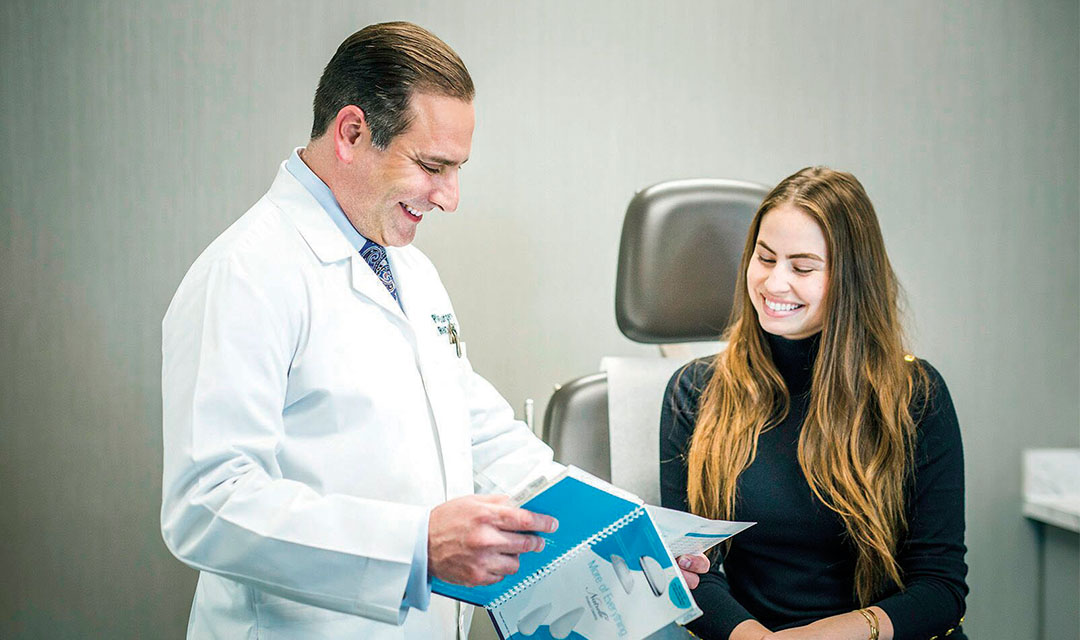
The Ravages of Pregnancy
As beautiful and miraculous as pregnancy and childbirth are, they can take a serious toll on a woman’s body.
Pregnancy and nursing render many women feeling less confident about the appearance of their bodies after childbirth.
There are a number of reasons for this. Pregnancy and nursing can result in any (or all) of the following:
- Loss of breast volume
- Separated abdominal muscles
- Loose skin with stretch marks
- Weight gain
- Lifestyle changes
Women suddenly find themselves in bodies they don’t even recognize. This can be physically, mentally, and emotionally trying.
How a Mommy Makeover Helps
Although it might sound like you’ll be spending the afternoon at the makeup counter at the mall, a mommy makeover is really an umbrella term that refers to a combination of body contouring procedures.
And no two mommy makeovers are the same. Each procedure is custom-tailored to fit the patient’s specific needs.
You will consult with a board-certified plastic surgeon who will, in turn, develop an individualized plan to address your goals.
Then the chosen procedures will be completed together to improve those confidence-draining changes that have lingered after your pregnancy.
There are several procedures which the surgeon may recommend:
- Tummy Tuck
One tell-tale sign that a woman has experienced pregnancy are stretch marks on the skin. Deeper below the skin though, the abdominal muscles have often separated – leaving the belly to hang down and sag.
Also known as abdominoplasty, a tummy tuck is a surgical procedure that reduces excessive fat and skin around the abdomen and reconstructs that abdominal wall musculature.
This helps to flatten the belly again and minimize the appearance of those stretch marks.
- Breast Lift/Augmentation
Breasts are prone to sagging after the demands placed upon the body during pregnancy and nursing. Surgery is performed to restore the breasts to their original and more youthful pre-pregnancy position.
Depending on your situation, the plastic surgeon might recommend a breast lift, breast augmentation, or breast lift with either silicone or saline implants.
In some cases, the breasts may become too large after pregnancy and are no longer proportionate to the body. In this case, there would be a breast reduction.
- Liposuction
For those troublesome post-pregnancy spots – typically the stomach, waist, hips, and thighs – where you just can’t seem to lose the fat, the surgeon may recommend liposuction.
With liposuction, small incisions are made in the treatment area and then a thin hollow tube, called a cannula, is inserted through the incisions to loosen excess fat cells. A surgical vacuum is then used to suction the fat out of those areas to create a slimmer body contour.
- Facial Rejuvenation
While this fourth procedure isn’t a mommy makeover “standard,” it is a terrific way to build upon the more youthful appearance that comes from the other procedures.
If the stresses of pregnancy and raising little ones is showing on your face, you’ll want to ask your surgeon about the possibility of adding a facelift or BOTOX.
Recovery from a Mommy Makeover
It’s important to remember that a mommy makeover is surgery.
That means that you’ll be put under anesthesia and need to allow for adequate recovery time.
When you return home, expect that you’ll have to wear compression garments to reduce swelling. This is going to ensure the most optimal results.
Also, prescription pain medication will be prescribed to help manage any discomfort.
It’s difficult to say exactly how long your recovery will take. Given that each surgery is customized to meet the individual needs of the patient, actual recovery times vary.
Most mothers are able to get back to their normal activities within two weeks of the surgery. However, strenuous activities will likely have a longer restriction time.
The final results of your mommy makeover will slowly become apparent in the weeks and months following the surgery. Swelling will subside and you’ll notice a renewed firmness and youthful appearance.
It’s important to note, however, that you’ll need to stay at a steady weight following your mommy makeover to maintain those results.
Are You a Good Candidate?
The answer to this question depends on a number of factors. You may be a good candidate for a mommy makeover if you:
- are healthy and able to stabilize your weight
- feel dissatisfaction with the changes to your body post-pregnancy
- have realistic expectations and goals
On the other hand, if you are planning on future pregnancies, then you will need to postpone this procedure until after that final pregnancy.
Reclaim Your Figure!
Contact us today to set up a free consultation with one of our board-certified plastic surgeons.
A mommy makeover will give you renewed confidence in your appearance so you can focus on what really matters – spending time with your family.
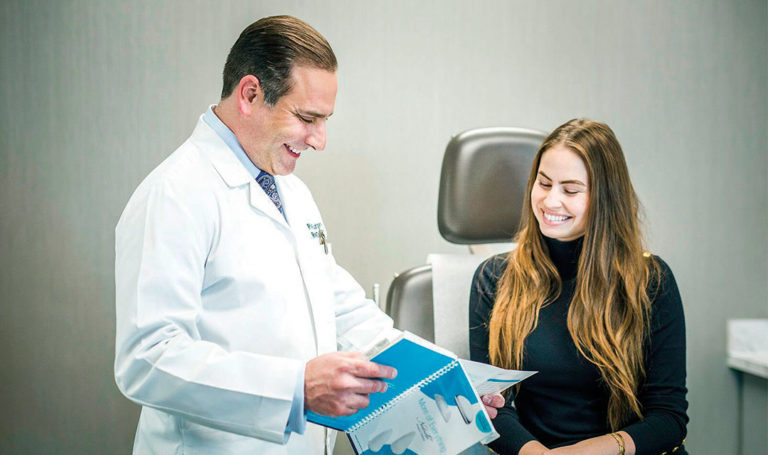
What Emsculpt Can Do For You
Do you find it difficult to keep your abs toned and firmed?
Welcome to the club. For many of us, this a problem area.
And no matter how many sit-ups and crunches you do, it just doesn’t seem to help. Sure, if you could do 20,000 sit-ups it would probably make a difference. But who has the time or energy for that?
It turns out, you do. Because that’s exactly what 30 minutes of Emsculpt can do for you.
You’ll just need to simply lay back and relax.
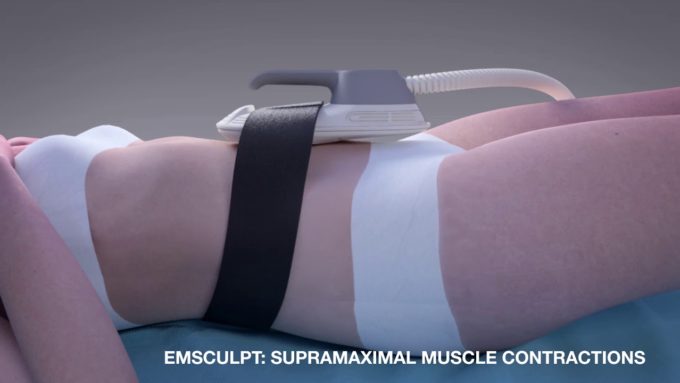
What Is Emsculpt?
It sounds too good to be true, right?
And you may be thinking, if this Emsculpt is really a thing, then I would have heard about it.
Well, unless you’re really in the know, you may not be aware of it because it’s the newest modality to enter the world of nonsurgical procedures for fat-reduction. That means no needles, no incisions and no anesthesia.
So how does it work?
Emsculpt uses non-invasive high-intensity focused electromagnetic (HIFEM) energy to implode fat cells while simultaneously building muscle. It may sound like the stuff of infomercials, but this technology has been cleared by the FDA for the purpose of improving abdominal tone and strengthening the abdominal muscles.
It does so by triggering 20,000 supramaximal muscle contractions in the course of 30 minutes. What this essentially means is that it’s able to affect the muscle in a way that would be impossible for you to do voluntarily.
The main reason those countless crunches and squats at the gym aren’t working is that you’re only activating about 50% of the muscle group you’re working every three to five seconds. But with Emsculpt, you activate 100% of the muscle 20,000 times in 30 minutes.
And all while you’re lying still.
While those coming in for Emsculpt procedures are often focusing on their abs, the device is also commonly used for the buttocks. There are even smaller attachments utilized to target the arms, thighs and calves.
It depends on your “trouble” area.
What to Expect from Emsculpt
Before we go on, it should be noted that Emsculpt is intended to be a supplement to a healthy and active lifestyle. Emsculpt is not meant to replace regular exercise and good eating habits.
In other words, it won’t eliminate a major gut that’s the result of poor lifestyle choices.
That being said, if you decide to try Emsculpt, here is what you can expect from a typical session:
- You will relax back onto the table while a small device is strapped over your abdomen (or whatever other area you’re targeting).
- You’ll be given tips on ways to breathe and relax through the session.
- A trained practitioner will then deliver power to the device – starting at a low level and then working up.
- Your muscles will begin to contract, creating a very intense vibration may feel strange at first. Your feet may also lift off the table with each contraction. (Don’t worry! This is normal.)
- After a few contractions, the machine will switch to a tapping action in order to break down the lactic acid your muscles produce during the contractions.
- At the end of 30 minutes, you’ll be done. And the muscles you worked will likely feel sore the next day – much like they would after an intense workout.
If you work out a lot, you will probably not need as much intensity in the session because the motor neurons in your muscles are already active and don’t require as much power to contract. But you will still see the same results.
Because the target cells in Emsculpt are muscle cells, there is an increase in muscle mass by 16% over four treatments. This creates the desirable side effect of permanent fat cell reduction by 19%.
After your initial session, it’s recommended you complete three more over a two-week period for the best results.
And that’s it. It really is THAT easy.
What Emsculpt Can Do for You
What Emsculpt can do for you will depend on a few factors. That’s why it’s important that you speak with a plastic surgeon trained in Emsculpt.
So contact us today to schedule your free consultation and find out how Emsculpt could work for you.
Then get ready to finally say goodbye to those “problem” areas.
The Ultimate Guide To A Mommy Makeover
Most of the women today want their body to be as fit as the celebrities and influencers they see on social. This attitude is not only due to social intimidation but also because they want to feel better in their self, and it works as a confidence booster for them. Most of the people nowadays believe that “when you feel good inside, it reflects your outer self,” and this seems to be so true. No woman wants her appearance to be an obstacle in achieving her ambitions and anybody to look down on them. This is one of many reasons they want to restore their body postpartum.
Many women have gone on fad diets and have been busting their butt in the gym. Nothing has worked to get their pre-baby body back; of course, it varies from individual to individual. Some can recover just great, and some just cannot. And there comes Mommy Makeover.
A mommy makeover consists of a list of procedures to restore or enhance the shape and appearance of a woman’s body after childbearing. Many areas of a woman’s body undergo a drastic change post-pregnancy. Most commonly, these areas are the breasts, abdomen, waist, and buttocks.
The procedures involved are performed considering the best option for the patient, According to their body conditions and what kind of procedure they want.
Possible procedures
- Breast Augmentation
- Breast Lift
- Liposuction
- Tummy Tuck
Breast Augmentation
Breast augmentation is a surgical procedure used to increase the size, fullness, and shape of a woman’s breast.
So, if you want to increase the size of your breasts, this can be an excellent option for you.
The procedure
This surgical procedure is performed under general anesthesia. A small incision is made under the natural breast fold (about 4 cm). The implant of the patient’s choice is then inserted above or just below the muscle and incision is sutured with dissolvable sutures.
Size and material of Implant
Size of the Implant usually depends on the patient’s goals for breast size and her natural anatomy.
Generally, implants made of silicone are used, but fat or tissue can also serve the purpose of implants.
Complications
The majority of patients do not face any difficulties. But in rare cases, these complications can arise:
- Infection
- Bleeding
- Implant complications
- Nipple numbness
- Swelling
Scarring
The incision is of generally as small as 4 cm, and as it is made under the natural fold, it is highly conspicuous and fades away with time.
Post-operation Recovery
Along with the medication given to you by your surgeon, much more is needed to be done to ensure a smooth recovery.
- A surgical bra is advised to the patient for some weeks.
- The patient can shower two days after surgery.
- The patient is asked to keep their arms by their sides, which means no excessive stretching as it can cause swelling.
- The patient shouldn’t drive or lift any heavy object for about 1-2 weeks.
- Light walking is recommended for six weeks, and the patient can continue their regular regimen after that.
- Avoid scar treatment of any kind (lotions, solutions, or herbal preps) until consulting your surgeon.
- Implants usually sit high and take some time to adjust. The time frame can be anywhere from 6 weeks to 6 months.
Breast Lift/ Mastopexy
Breast lift is a surgical procedure, which primarily focuses on raising sagging or drooping breasts and gives them a firmer and round look.
There are three types of breast lift procedures:
1. Periareolar incision: this approach follows the natural areolar shape of the patient and is typically best for someone who has large areolas and minimal sagging or drooping that needs correction.
2. Vertical breast reduction Incision: This approach goes the same as the Periareolar incision but also extends down from the areola, thus providing a more significant lift for moderate drooping.
3. Inverted T-Shape Incision: this approach follows the same way as both of the above-mentioned incisions with an additional incision within the breast fold.
The Procedure
It involves four steps:
1. Restoring nipple-areolar complex in its areolar complex
2. Adjust the breast according to the desired size
3. Giving it the desired shape
4. Removal of extra skin
This surgery is performed using general anesthesia, and an incision will be made according to the approaches mentioned above as desired by the patient. The surgeon will lift and reshape breasts. After removing the extra skin for a firmer appearance, the incisions are sutured with skin adhesives, sutures or surgical tape.
Complications
Just like breast augmentation, it has very rare chances of complications. Some of the complications are:
- Bleeding
- Infection
- Blood clots
- Uneven breasts
- Blood or fluid collection in the breasts
- Blood clots
- Scarring
Scarring may be a drawback of any surgery. However, scarring doesn’t persist for a long time as it fades away with time and becomes inconspicuous with the use of “doctor approved” scar creams/gels.
Post-operation Recovery
Full recovery times varies from individual to individual according to their body’s wound healing properties.
All the instructions given are just the same as that of breast augmentation procedure.
As there are long incisions, scar fading can take some extra amount of time, but the rest of the instructions are the same.
A breast lift and Breast Augmentation can be done together to achieve more appealing results.
Liposuction
Liposuction is a surgical procedure in which localized fatty tissue is removed from the abdomen. It is a very suitable procedure for people wishing to remove localized or stubborn fat deposits around the abdomen.
The procedure
Liposuction is a surgical procedure performed under local anesthesia. In this process, small incisions are made close to the fat deposits, and a cannula is inserted into the incisions to break up the fatty tissue and remove the dislodged fat by a medical vacuum. The incision is closed using dissolvable sutures.
Possible Complications
- Temporary loss of sensation in the surgical area
- Persistent swelling
- Seroma (temporary fluid pouches)
- The fat that has been removed may leave some irregularities,
- Infection, or damage to nerve tissue
- Fat embolism (trapped fat in blood circulation)
Scarring
Scarring rule goes the same as mentioned above. Although the time frame varies from person to person, it eventually fades away and becomes unobtrusive.
Post-Operative Recovery
- Generally, this procedure has a quick recovery.
- Medicines and other preventive infection measures are prescribed.
- The patient is suggested to have a family member or friend by their side as the patient needs support while getting out of the bed or walking for the first two days.
- Driving is forbidden because medication involves Tylenol, which may make you sleepy.
- Compression garments are advised to support the new contours of the body and let them adjust according to the body’s natural anatomy.
- The patient is discouraged from doing any heavy lifting/ exercises up to 4 weeks and can continue their regimen after being cleared by their doctor.
- Incision site should be cleaned with a specific solution provided by your doctor to avoid the risk of infections.
- Keep track of your healthy diet.
- Some medicines can also result in constipation. Add more fruits in your diet with laxative properties, or you can also seek help from a pharmacy product.
Tummy Tuck
A tummy tuck is a surgical procedure, in which loose skin is excised to give a flatter abdominal wall by tightening the abdominal wall. This procedure is best for mommies who have lost weight and are left with droopy skin or loose postpartum skin in the abdomen area.
The Procedure
The patient receives general anesthesia, and a horizontal incision is marked between the hips along the bikini line. The surgeon then tucks the abdominal wall by excising the loose skin and sewing the rest to itself from the sternum down to the pubic area, tightening the abdominal muscles. The navel is repositioned. Then the incision is closed with dissolvable sutures.
Complications
- Bruising
- Swelling
- Changes in skin sensation
- Seroma
- Poor wound healing
- Fat necrosis
- Asymmetry
Scarring
Scarring with tummy tucks will be permanent but should fade away with time. As the incision is made below the bikini line, it is easily concealed under the underwear. So, it is just unnoticeable.
Post-operation Recovery
- Following the operation, the patient is asked to put compression garments to reduce the swelling and support the new contours while it heals and adjusts according to the body. The patient is asked to wear these according to the progression of their recovery.
- Bruising, tightness, swelling, and moderate pain are expected after the surgery.
- The patient is prescribed antibiotics as the risk of infections increases and can cause severe and long term damage to your body.
- A solution is prescribed to be applied to the incision area to protect it from any infection at least two times a day for two to three weeks.
- Avoid heavy exercise, work, alcohol intake, and smoking are prohibited.
- The patient is advised to rest and one to take two weeks off from work to better aid the healing process.
- Last but the most powerful, must follow your surgeon’s advice no matter what.
- Scar treatment can be used after talking to your doctor.
- Pineapple enzyme is helpful in case of inflammation and reduces bruising.
- Wear comfortable clothes to avoid burns.
Some pre-operation Instructions
- Wash with the solution recommended by your doctor twice daily, and one week before surgery.
- It is advised to use an anti-bacterial soap like Dial anti-bacterial, starting two weeks prior to surgery.
- Remove all the hairs in the surgical area.
- Eat light food for two days before the surgery to avoid constipation due to the medication.
- Wear loose and comfortable clothing.
- Tell your surgeon about any illness or medication you are currently taking
- Avoid smoking two months before your surgery as it affects the lungs and causes complications in operation and post-operation as it increases the risks of Pneumonia.
- No Nicotine products: Avoid intake of any nicotine products for at least two months before the surgery. NIcotine may interfere with the blood flow and slow down the process of healing and recovery.
- Stop using Aspirin, naproxen, ibuprofen or other NSAIDs, alcohol, vitamins, and all herbal products because they can cause potential bleeding in your surgery.
- Avoid sun exposure because higher melanin content can slow down your healing process.
- Do not drink anything (including water) after midnight, the day before surgery.
- Avoid creams and lotions on your skin during surgery.
If you’re interested in more information about Mommy Makeovers, please contact our office at 248-735-3800.
Receive $2,000 off your Mommy Makeover now through October 2019!















